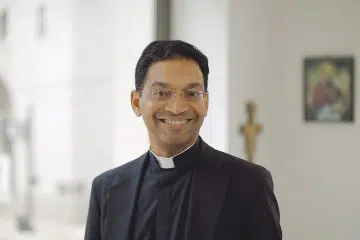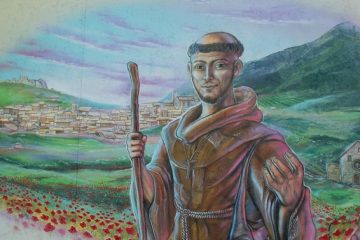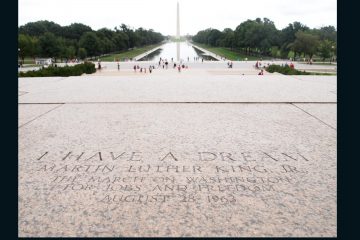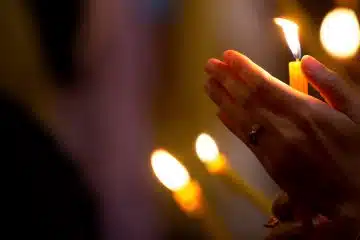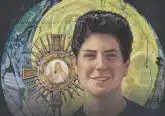New media makes missionary work come alive in ‘real time’
Thursday, October 8, 2009
Staff report
ARCHDIOCESE — Toward the end of his 2009 encyclical Charity in Truth, Pope Benedict XVI included a brief but strongly worded analysis about the “increasingly pervasive presence” of modern media and their power to serve good or immoral interests.
The two pages on communications were barely noticed in an encyclical that focused on economic issues, but they underscored the pope’s approach to today’s media revolution and his interest in its potential for evangelization.
One of the more powerful ways evangelization is occurring with new media is with missionaries serving throughout the world who are more readily able to connect Catholics here at home with their experiences in other cultures. Whereas decades ago family members anxiously awaited letters from missionaries serving in China or Africa that often arrived months after their writing, today’s missionaries can use the internet and digital technology to share with family members an experience that occurred just moments before — thousands of miles away.
 |
| CT/istockphoto |
“It’s very much more real time now,” says Maryknoll Father Joe Veneroso, who writes an internal blog for the Maryknoll order and at one time served as a missionary in Korea. The order also has a segment of their website, “Explore my world,” begun last year, which encourages young people to submit a video of some kind of ministry they’re involve in. Father Veneroso says this is an outgrowth of the “old Maryknoll essay contest.”
His order’s missioners in Africa have their own website, as do those on some other continents, he said. While it’s made Maryknoll magazine seem “like a dinosaur,” he realizes that they are reaching out to “two different audiences. The magazine’s demographic is women 65 and up, educated. But the young people like the new media.”
Instead of relying on the twinning of parishes, Maryknoll is twinning missioners with sponsors who can see immediately, “Here’s what we’re doing,” he explained.
Maryknoll’s founder, Bishop James Anthony Walsh, equipped all the missionaries back in the early 1900s with Brownie cameras because he believed that “people would not support what they could not understand,” Father Veneroso said. New media is seen as the perfect extension of the founding concept.
He adds, though, the reminder that “no matter how glitzy and high tech it becomes, nothing can substitute for one-on-one interaction, face-to-face.”
Jesuit Father Ed Schmidt, a Cincinnati native, has taught business ethics at the Universidad del Pacífico for more than 35 years. For some poorer countries, such as Peru, the technology explosion has been rapid.
“When I first came to Lima in 1967, the population of the city was 2.5 million,” he remembered. “Telephone numbers only had five digits. Many areas of the city had no telephone service. If you wanted to get a line, you had to be put on a waiting list. It could take almost 20 years for your turn to come up. Very few cities in Peru had reliable telephone service.”
As an amateur radio operator, Father Schmidt was a link to the United States for U.S. missionaries. “International telephone calls were hard to make and even harder to understand once a connection was made; they were also very expensive,” he said. Short wave radio became a lifeline for a period of time.
But “times have changes drastically,” he said. “Lima now has a population of about 8.5 million. The state-owned telephone company was purchased by Telefonica of Spain a number of years ago. Lima now has one of the best communications networks of any large city in the world since there are no weak links. In fact, almost all of Peru has excellent worldwide coverage. I know of villages that went from a single telegraph line for Morse code messages to international direct dialing in every house that wanted to have it, via satellite, with a quick flick of a switch! What had been isolated cultures and sub-cultures found themselves incorporated into the big, wide world, literally overnight.” Peru now has one of the highest percentages of people connected to the internet of any Third World country, which he said is “bringing changes in their way of life, be they for better or for worse.”
Sister of the Precious Blood Marife Hellman, who runs a small girls’ school for Mayan young women from the remote mountainous regions of Guatemala, said technology “is the one way we can eventually almost equalize educational opportunities.”
She used to rely on an internet kiosk in a nearby town once a week or so, but received a wireless internet system in her home earlier this year. The system helps in her ministry.
“Naturally the Mayan students can use the internet when necessary,” she said. “I have two other computers where they can learn how to work the computers and there is an encyclopedia installed in one. It is very useful.”
As is common in most areas, young people are heavy users of the public internet terminals in Guatemala along with teachers, Sister Marife said.
“Cell phones are the great salvation for the poor as they are affordable,” Sister Marife said. “Everyone who can get reception gets a cell phone.
“When I lived with one Mayan group in the forest several years ago one man told me that a phone would be a great saver since at that time the men lost several days work and had to eat very little just to get a little education that certain concerned groups offered. At that time the only way to get to the cooperative in which I lived and taught, was to walk up the mountains for three hours. When I left they got a dirt road and some years later, cell phone access. Now more children are getting a middle-school education, and health has improved.”
Sister of Notre Dame Anita Marie Stacy has been serving in rural Uganda, Diocese of Hoima, since the mid-1990s, when the Sisters were invited by the bishop to bring the Gospel message and education to the poorest of the poor in the country’s most remote areas.
They established St. Julie Primary School in 1997 and Notre Dame Senior Academy in 2003 with the goal of bringing quality Catholic education to the children. Sister Anita Marie, along with Sister Rita Geoppinger, played an active role in opening the academy, where she now teaches the secondary-level girls. She is a Cincinnati native from St. John Vianney Parish and attended Marian High School.
Technology is of less assistance in her area as one might hope, she explained. “Since the network is bad, we can hardly make a telephone call. We go outside, and there are certainly ‘hot spots’ where we might be able to get network, but depending on weather conditions and network load, we might not be even able to get the call through. Yesterday, I was calling our Sisters who had gone to Kampala, and I reached them, and then the wind started to blow and it was over . . . they could not hear me although I could hear them. So I was unable to communicate with them.”
A satellite dish helps them use email to communicate, but that technology is still limited because of its expense to the missionaries. “We pay by how much we download and upload. Therefore, we cannot send or receive photos on a regular basis, or we would go over the limit we are allocated each month.”
The technology that has worked best, Sister Anita Marie says, is a solar computer lab, using computers that get energy from solar panels that then store it in batteries.
“As of yet, I have still not been able to find a way to bring the internet into the lab, although I have researched this quite a bit,” she told The Catholic Telegraph. “It would be wonderful to open this virtual world for our students — some of whom have never been to a large city and have limited experiences.”
Franciscan Father Max Langenderfer, a friar of the St. John the Baptist Province who is currently stationed in Kenya, has been in Africa since 1986.
“For half of the past 21 months I have been doing classes and retreats for young African Franciscan Sisters and OFM Brothers in formation,” he said, and used his laptop to write talks and prepare materials for classes and retreats. With the laptop he is able to show his classes two DVDs on St. Francis, as well as two popular American movies that deal with themes of inculturation.
“Email has become our usual mean of communication with the world of the United States, as well as with the Franciscan family around the globe,” he said. But “digital photos also bring the world of Africa to the people of the United States. Pictures and texts that can be seen are much more effective than mere words. Especially in Africa, people are used to telling stories and the culture is mostly oral, rather than written. I am very thankful for the media tools that I have available.”
Sister of Mercy Miriam Krusling, who runs St. John Bosco Home in Jamaica, depends greatly on email to keep in contact with her family, fellow Sisters and friends, and to help spread the news of the work at the home. But “all this depends on us having power and no thunderstorms and hurricanes too,” she admitted.
In Vietnam, lay missioner Anh Vu said it’s relatively easy to keep in touch with home, “mostly via emails. I’m online on a daily basis for research at work. When I am teaching the students, it’s pretty much with a board and chalk markers. Computers and internet access are mostly found in internet cafes (one in every block in the city or downtown area in the province), offices, computer classes in schools and higher income families. Not all have access to it, as it is still considered to be expensive for many.”
Father Veneroso said that in years past, missionaries often felt disconnected from home and from the headquarters of their orders and affiliates. Now, he says, missionaries tell him, “I feel connected — I don’t feel as out of it.” And as far as missionaries remaining in solidarity with the people they serve and the people at home, “this is really huge,” he said.


